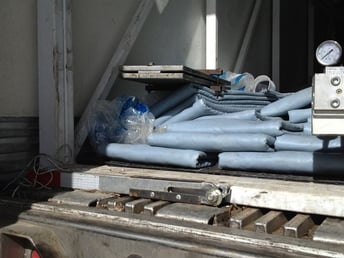For more than 100 years, ASTM International has provided standards for a variety of industries. Standards help consumers and industry professionals ensure safety and consistency in the things they use or make.

They provide clarity and prevent costly or even dangerous mistakes; imagine being tasked with building a fence to meet neighborhood regulations without any details about what it should look like or what materials should be used.
“(ASTM members) use good science, good engineering and good judgment to improve performance in manufacturing and materials, products and processes, systems and services,” explains the organization. “Businesses, governments and individuals collaborate openly and transparently in our technical committees, ensuring our standards combine market relevance with the highest technical quality.”
These standards cover a wide range of products, services, materials and even the environment. ASTM standards are constantly evolving and growing as new ideas and products are introduced.
How Standards are Created
ASTM standards are intended to be used by everyone, so ideas for new standards or changes to existing ones can be submitted by anyone. If the committee decides standards for a topic would be relevant and that none already exist, a task group begins researching and drafting them using a template.
“Once a standard has successfully cleared the three levels of peer review provided by ASTM (subcommittee, main committee, and Society), it is assigned a fixed alphanumeric designation and receives an official approval date.” The resulting document takes on an official status, “now considered to be an ASTM standard and is capable of being cited in contractual language, referenced by a code body, or mandated by a state or local government.”
ASTM standards can help a city or entity establish expectations for increased efficiency and safety.
For example, aging wastewater system regularly require the rehabilitation of existing sewer pipes. To ensure these systems can be successfully renewed and work effectively for years to come, the pipe rehab industry routinely introduces new ideas and technology for repair work. And with these new advancements come standards to ensure that municipal workers and contractors across the country are installing repairs in the safest, most effective way.
Cured-in-place-pipe (CIPP) was first introduced in 1971 and has since become the most widely-used rehabilitation method for sewers and storm lines. The trenchless sewer repair method requires little to no digging, minimizing environmental impact and community disruption and using less time to complete than more invasive sewer repair methods.
The process requires inverting or pulling a flexible felt or fiberglass liner inside a degraded pipe, and inflating the liner to press against the inside walls. The liner may be exposed to heat or ultraviolet light (UV) to cure and harden.
F1216-16, one of the more commonly used ASTM standards for CIPP lining processes, includes materials to use for the tube and resin, design considerations, cleaning and inspection practices, resin impregnation, required pressures, curing using hot water and steam, and more. From preparing the crew and the materials for curing, to the post-cure cool-down, the standards provide industry professionals with a dependable process to follow from start to finish.
Standards offer consumers and producers alike a source for consistency, as well as greater confidence in the safety and efficiency of the products, services and materials they use.
Request a free copy today of PRT's poster, Key Components of ASTM Standards for CIPP, to take with you on the road or display in the office:
